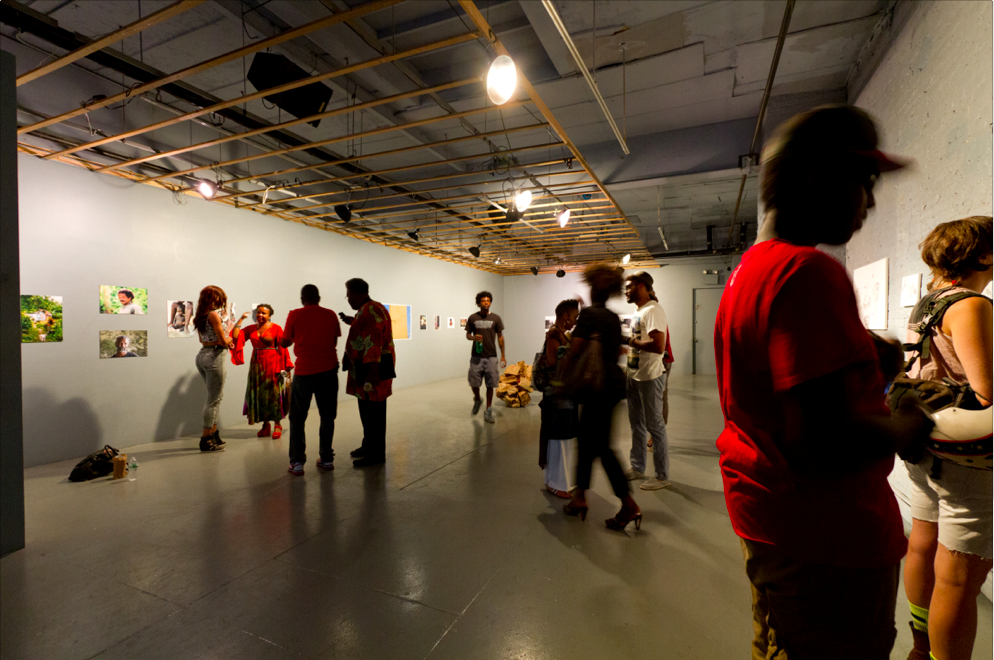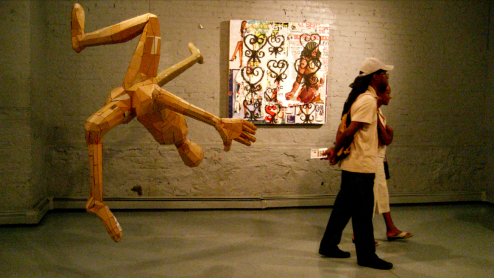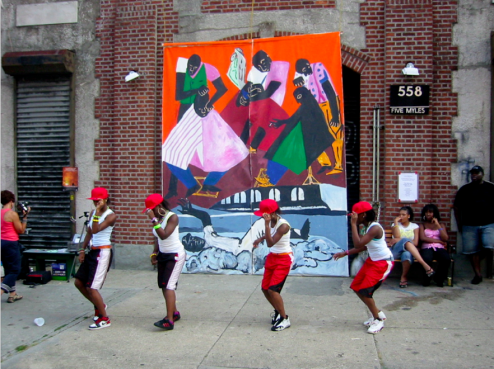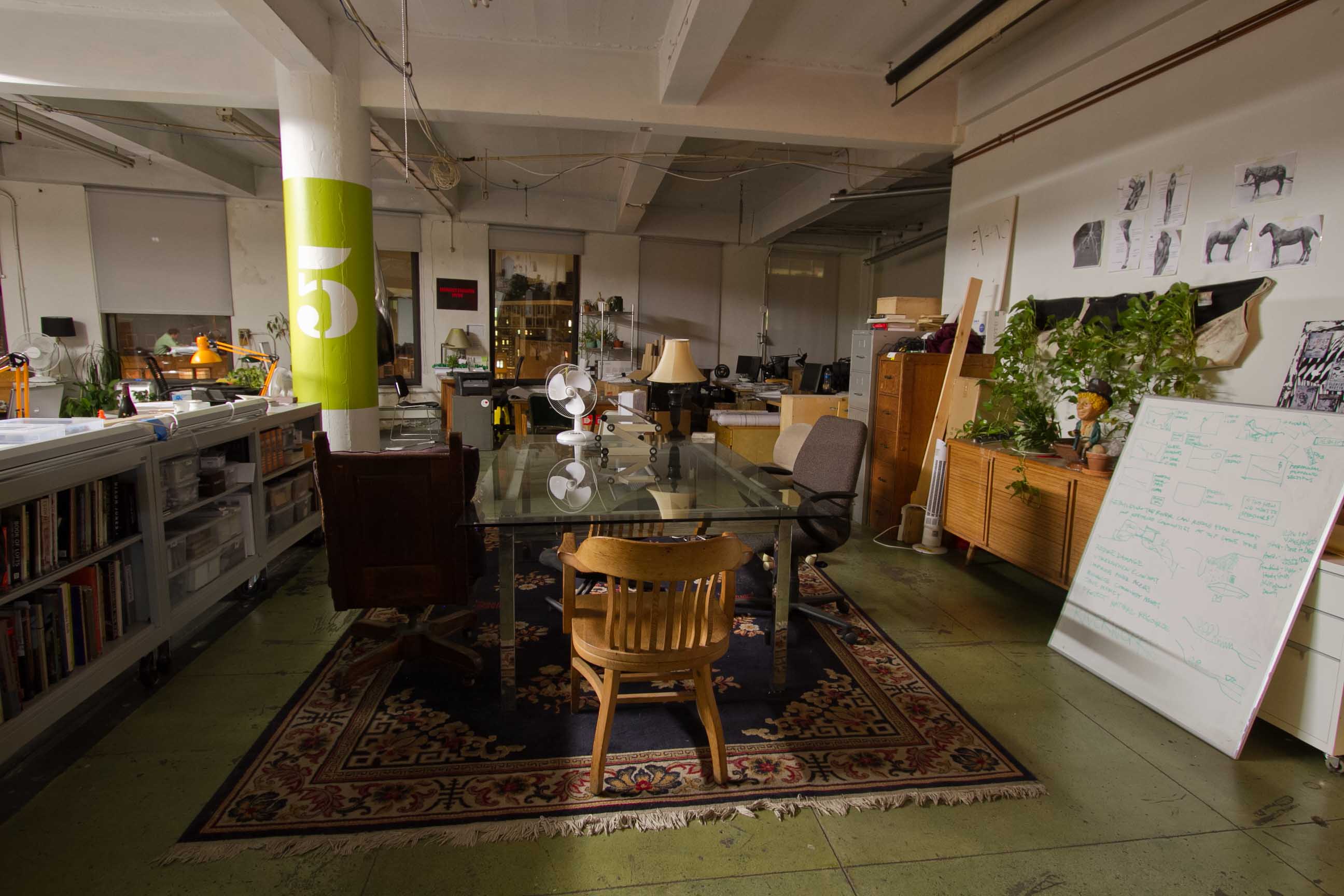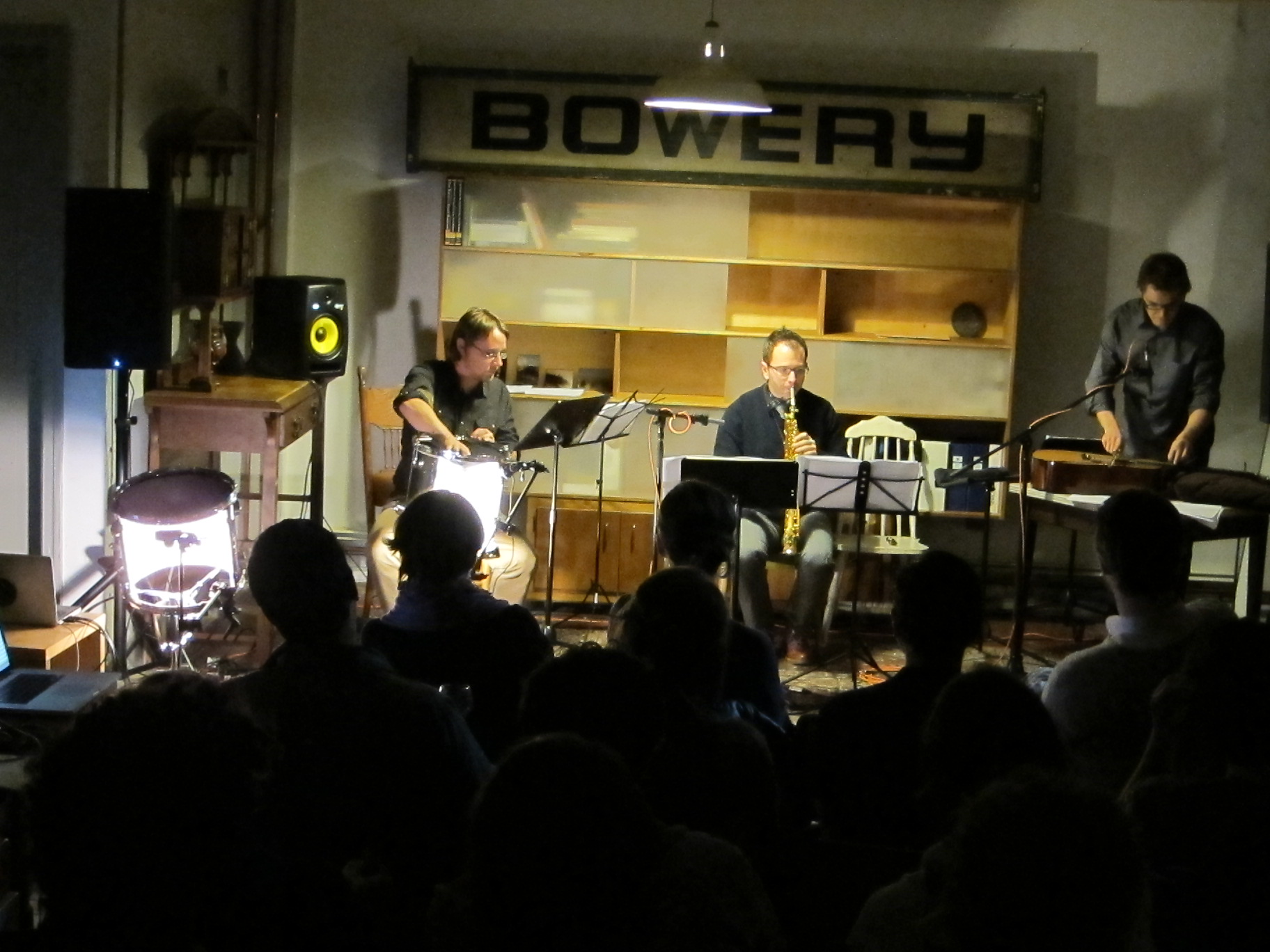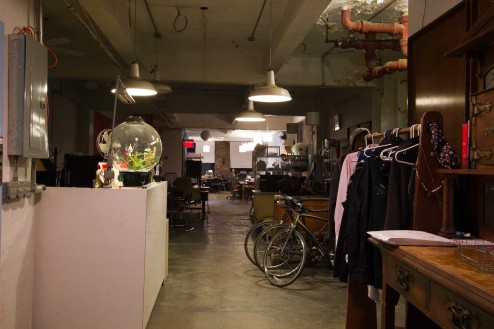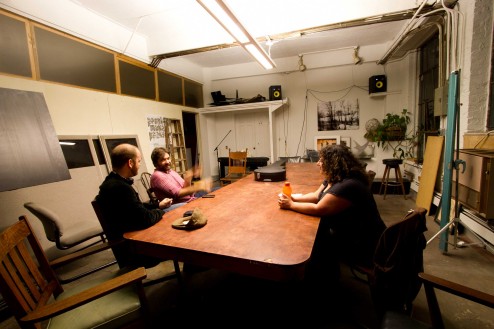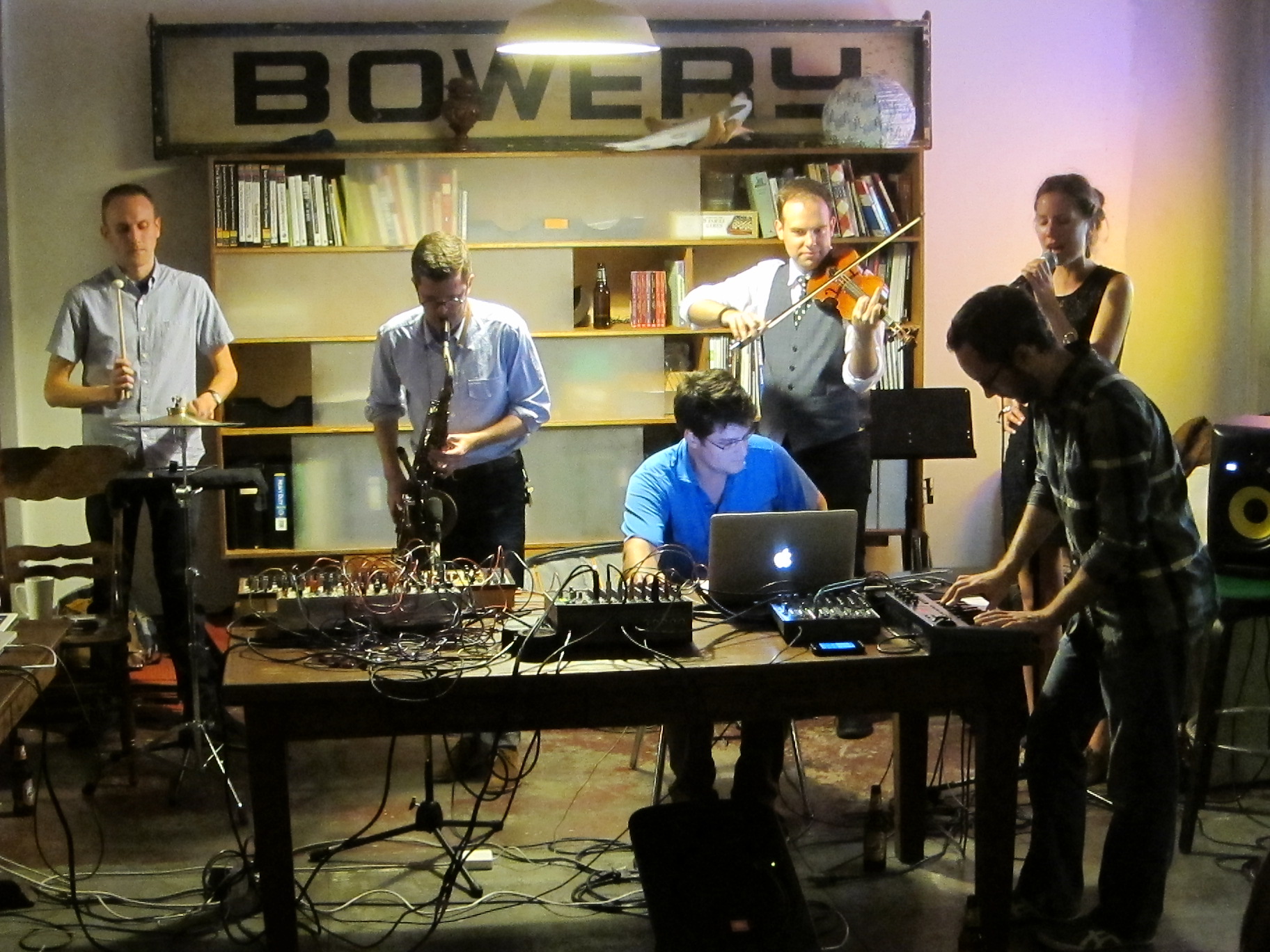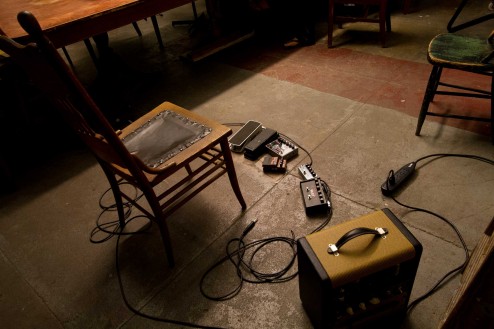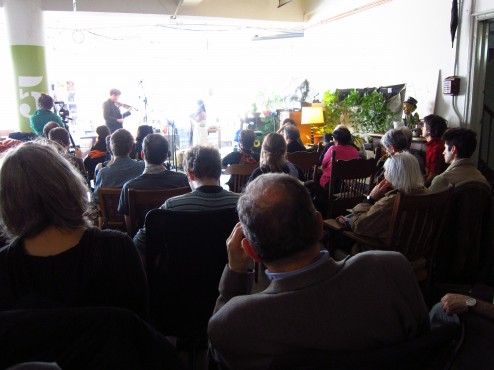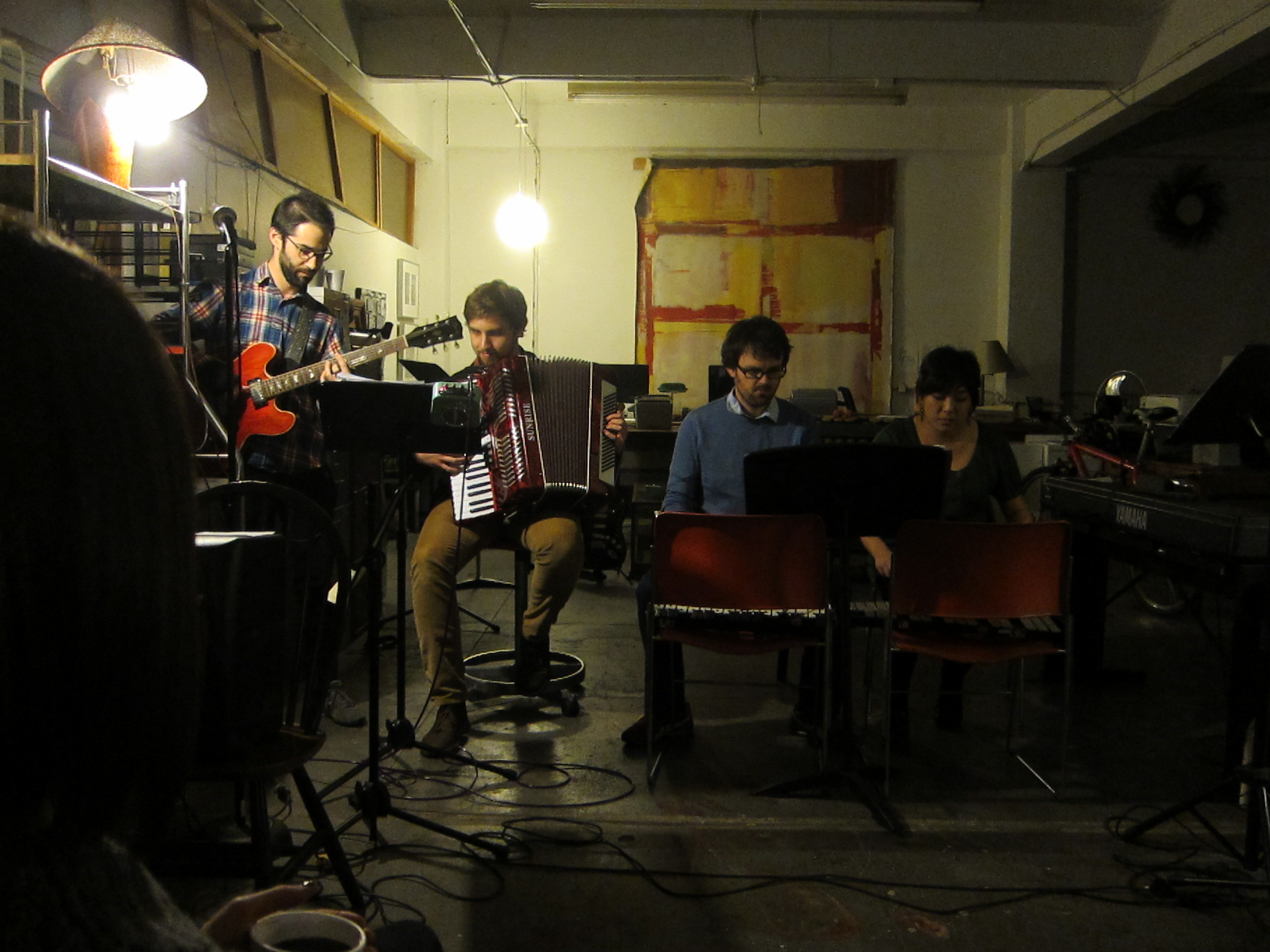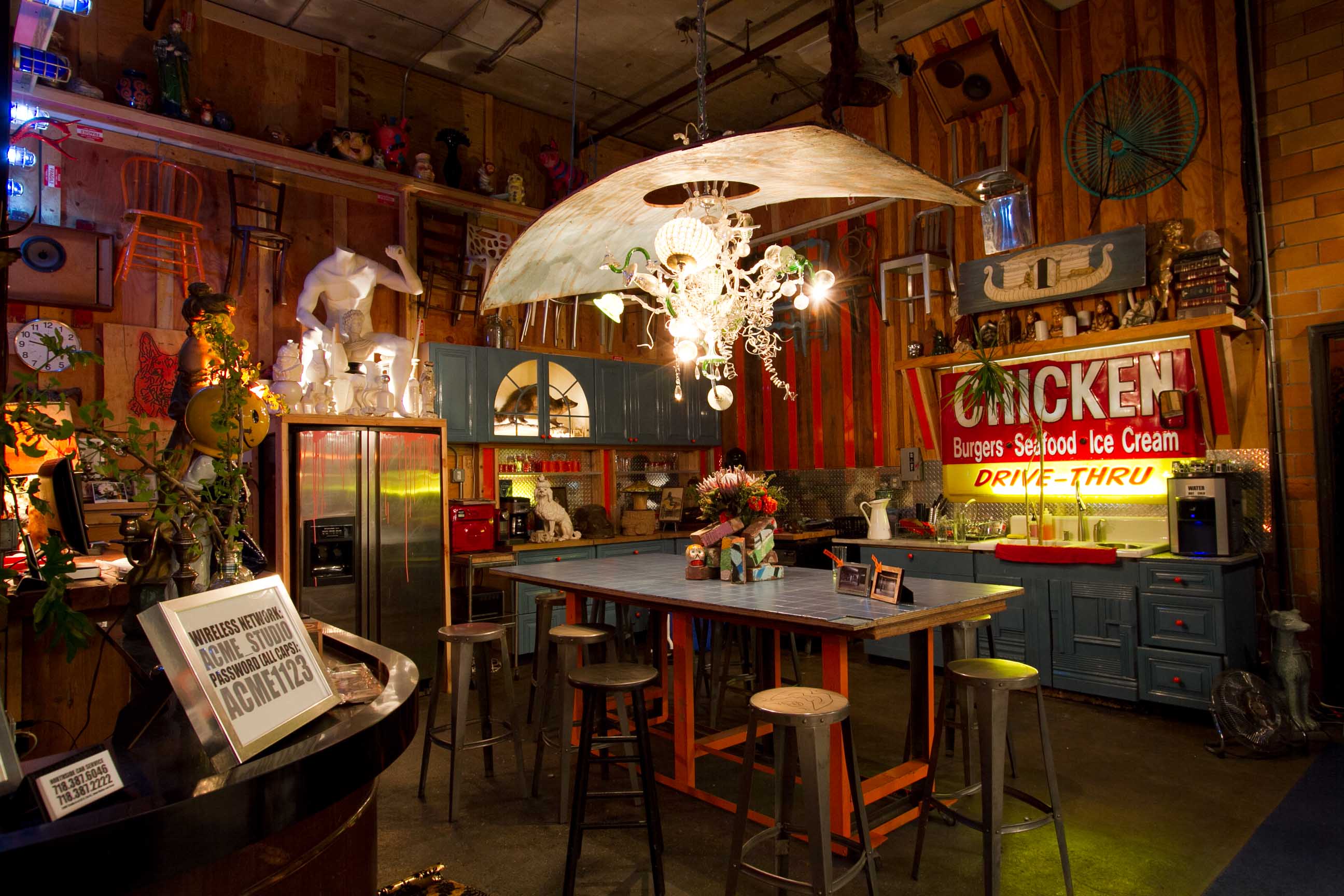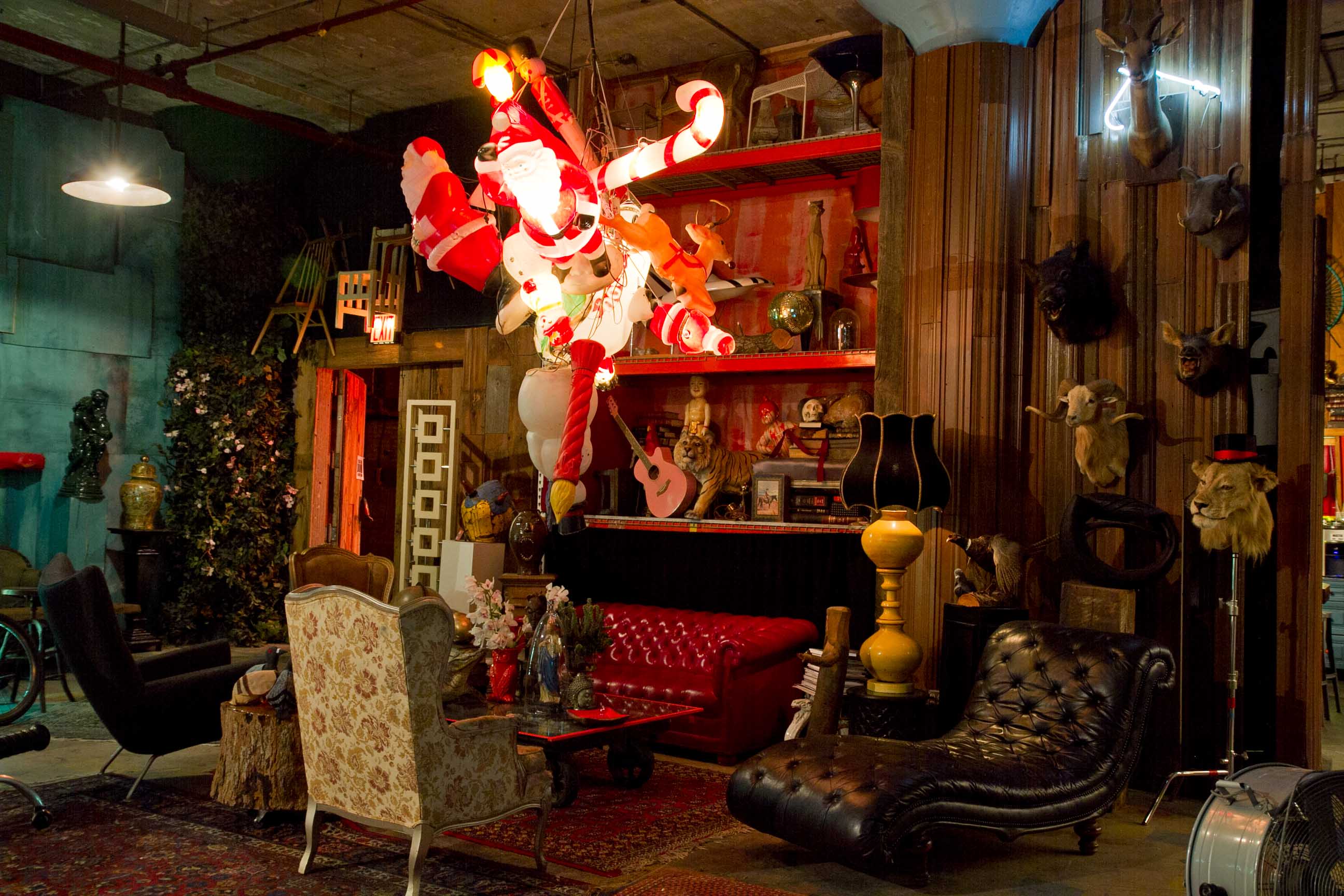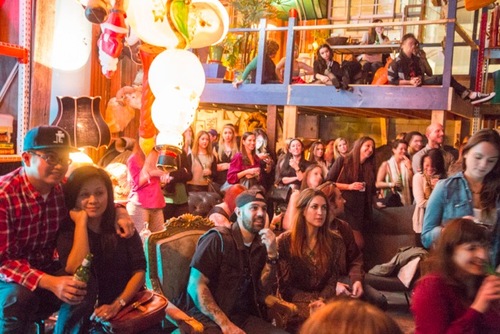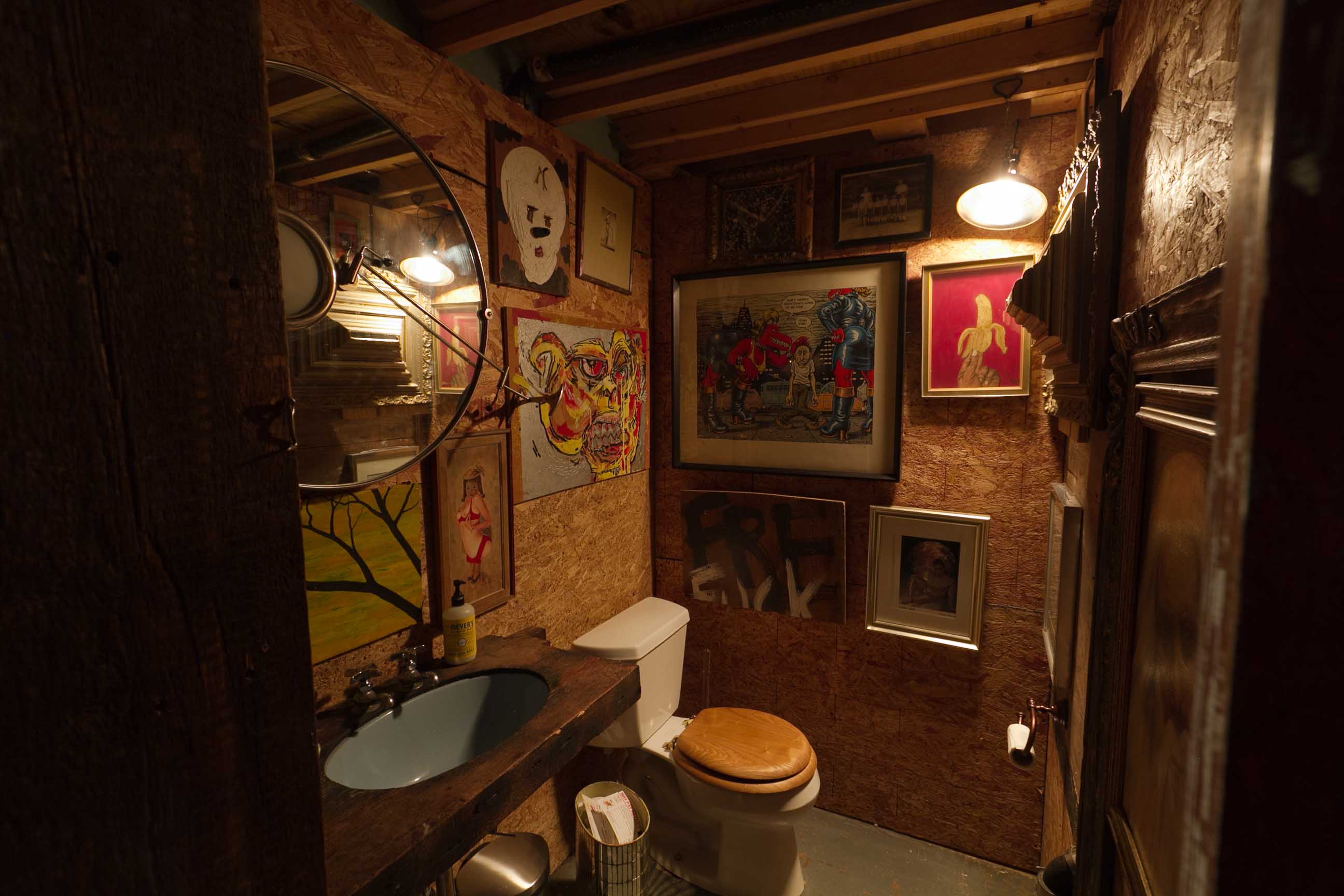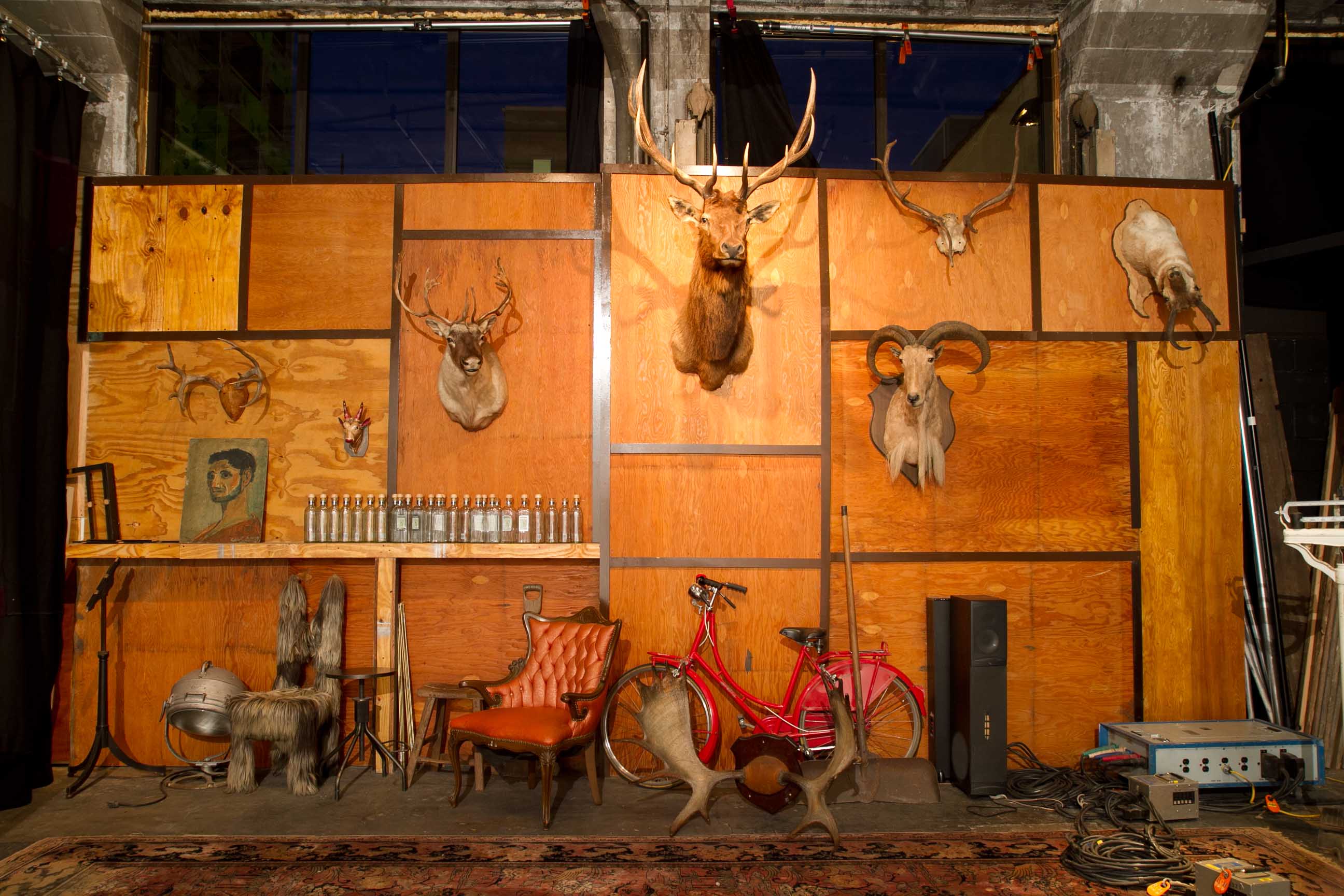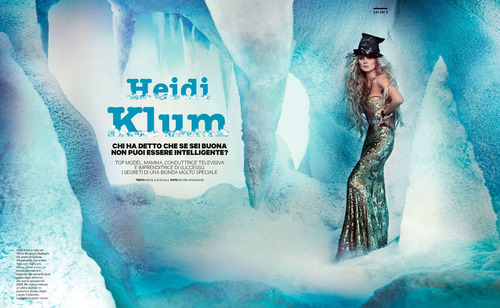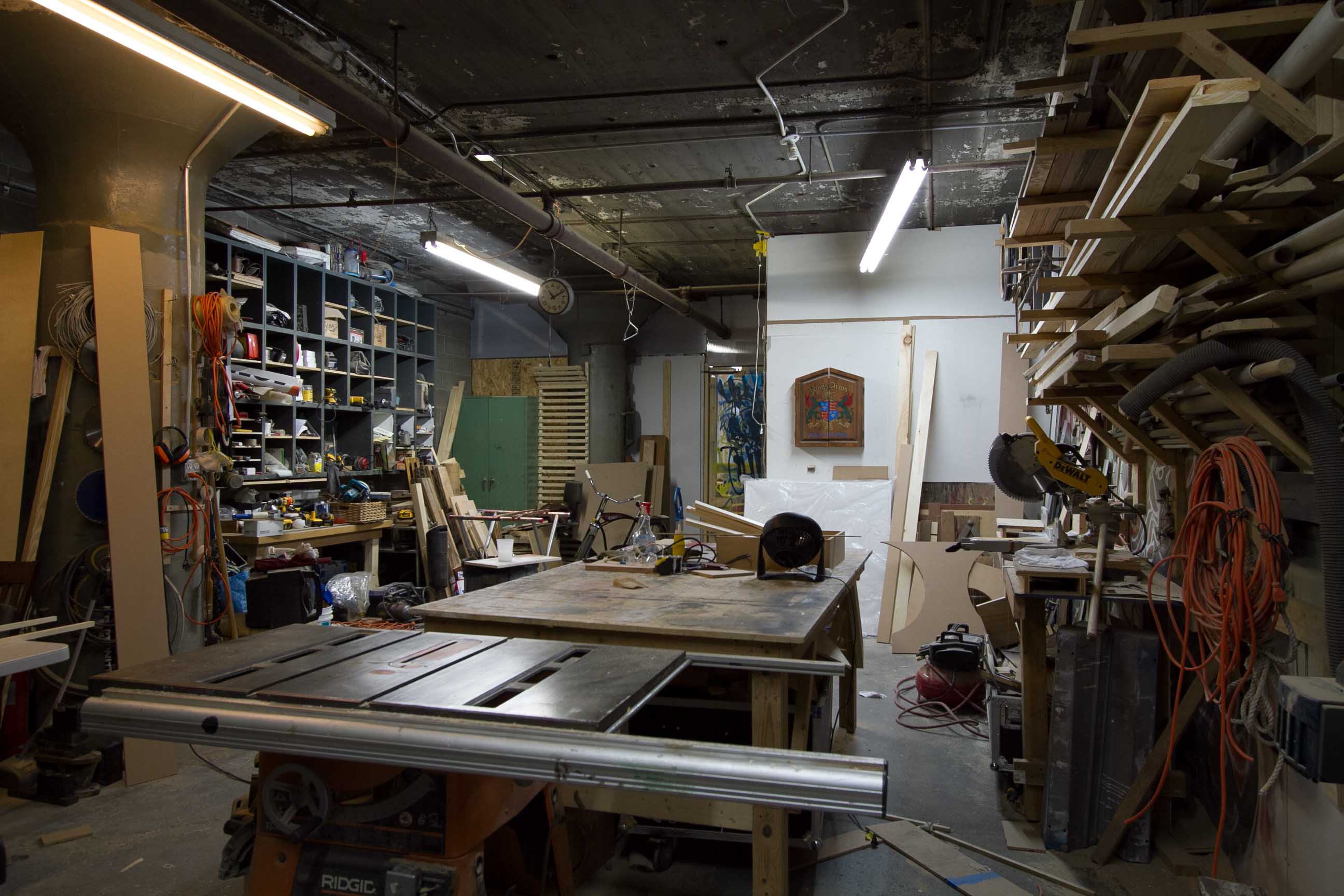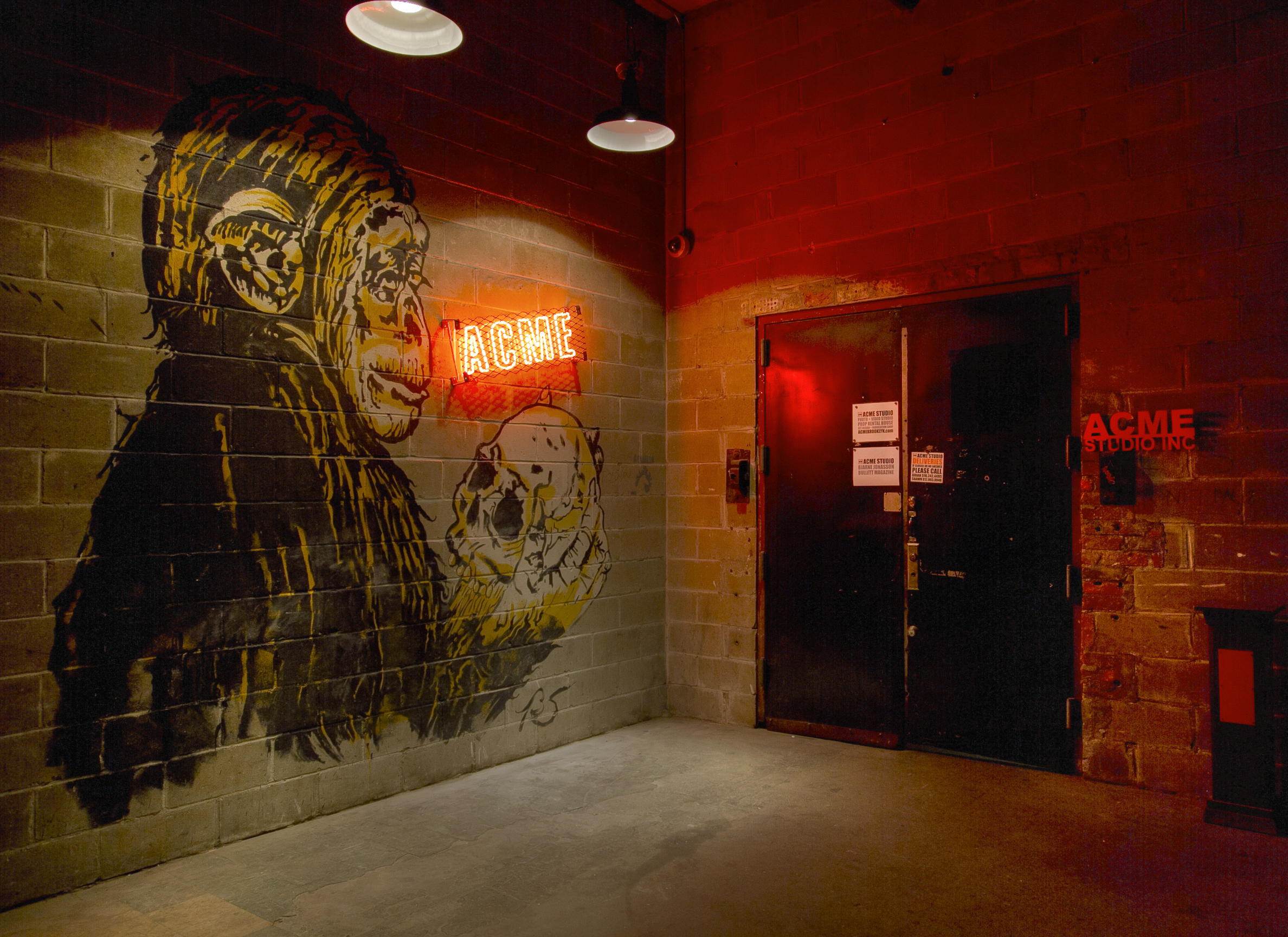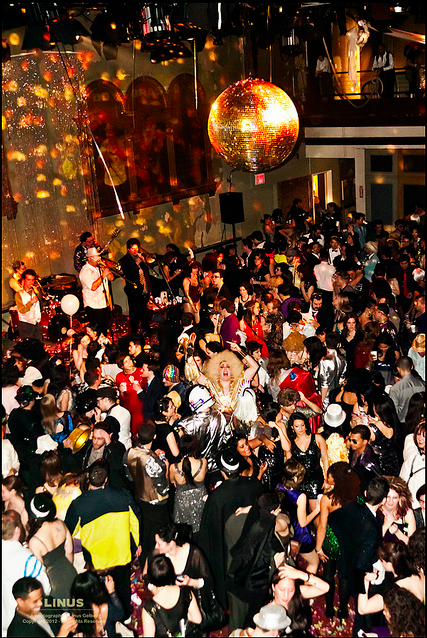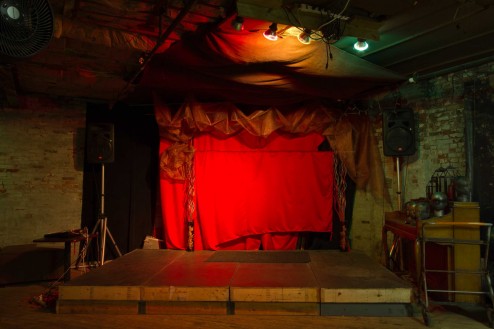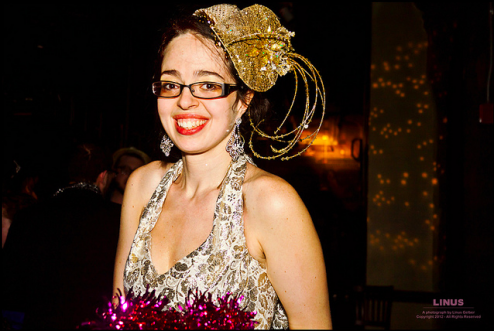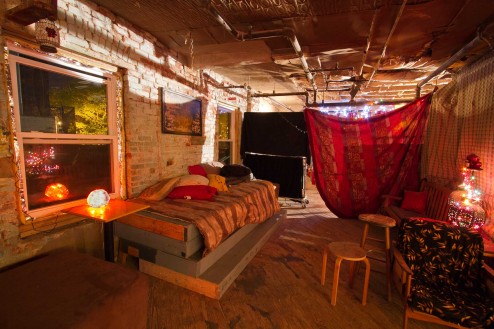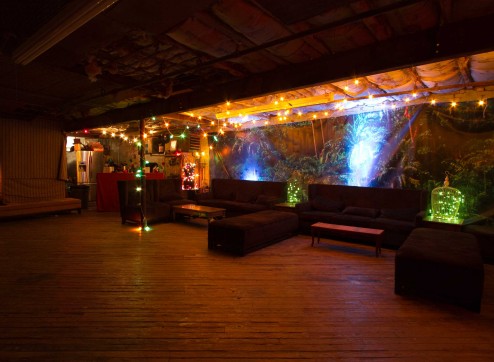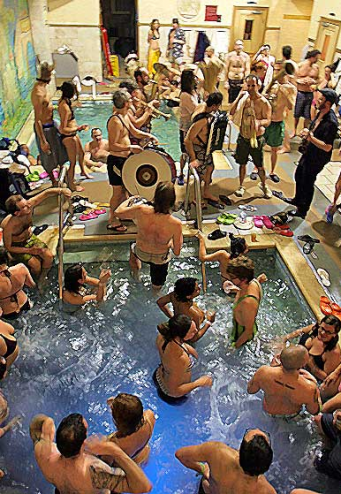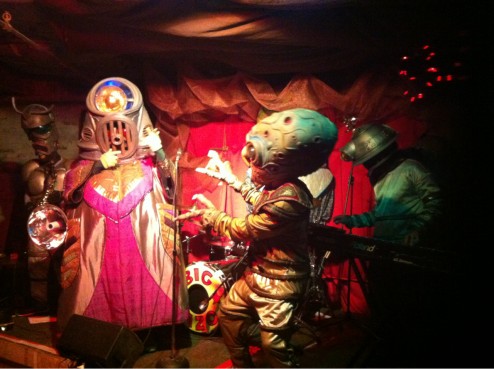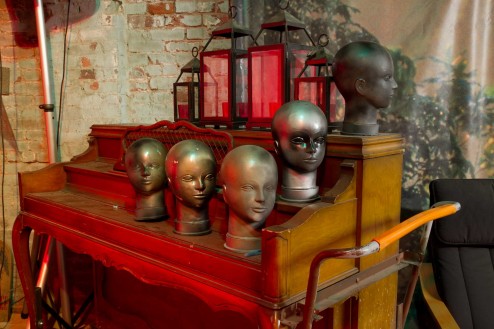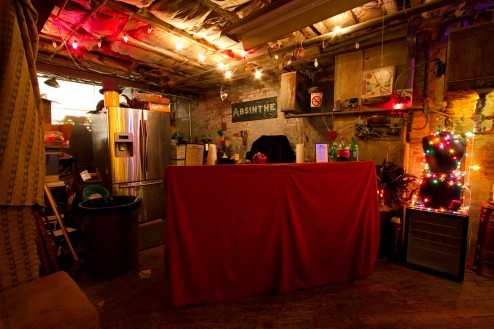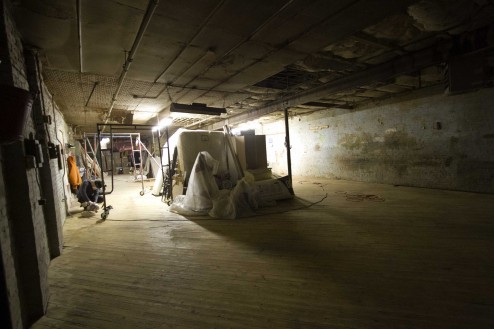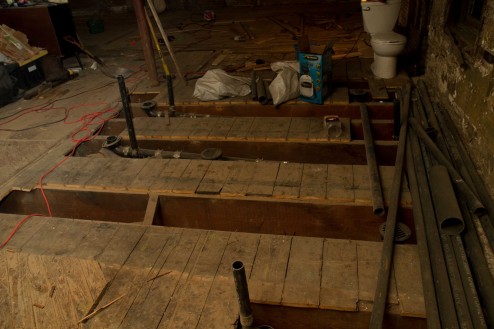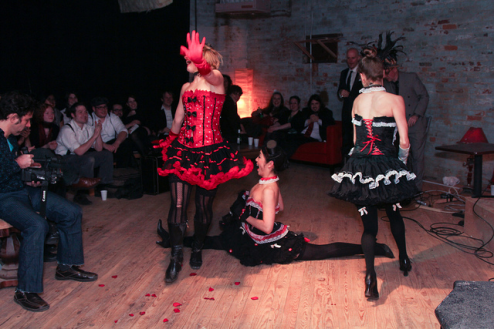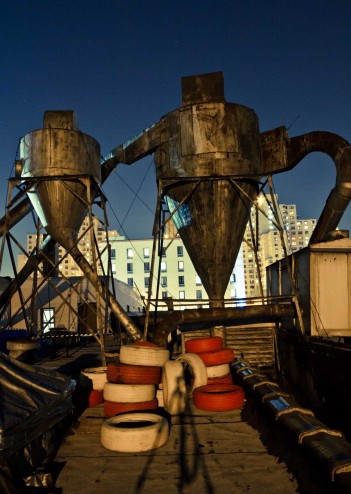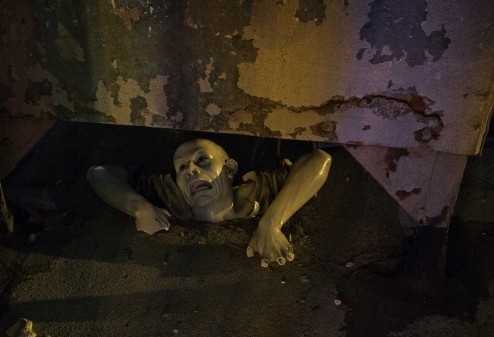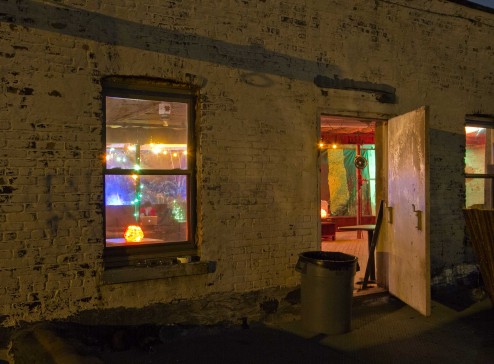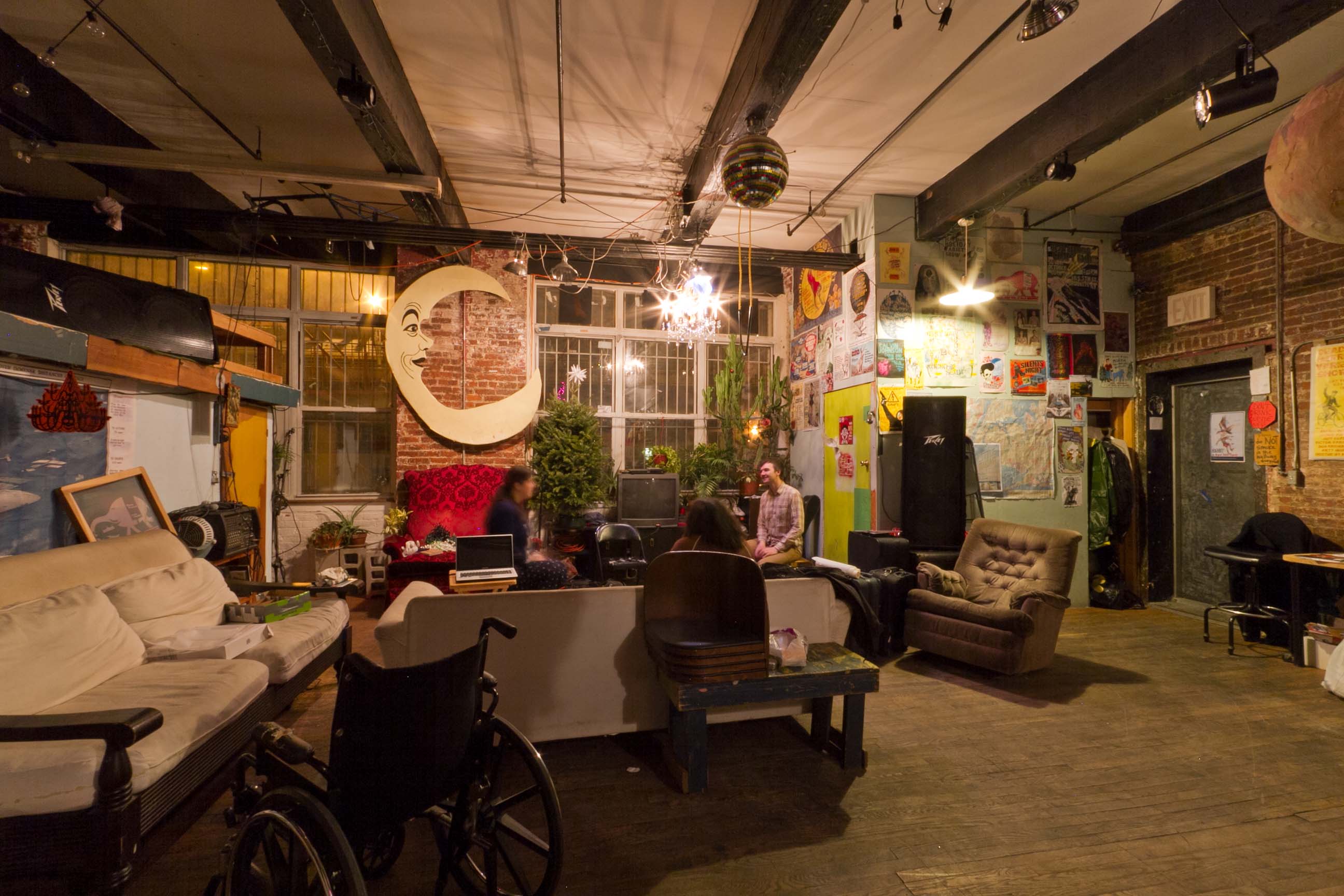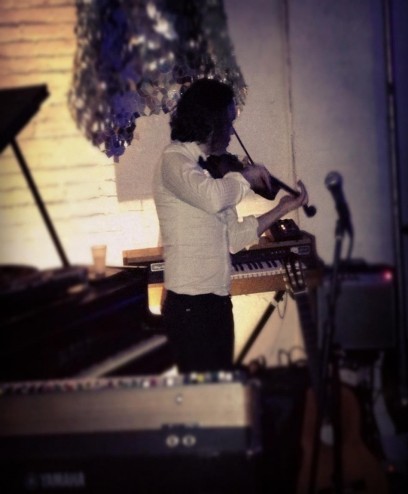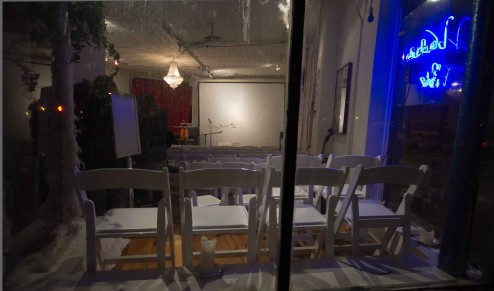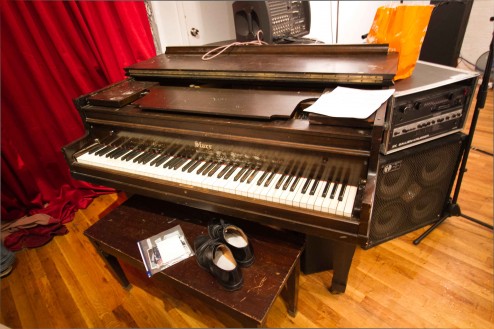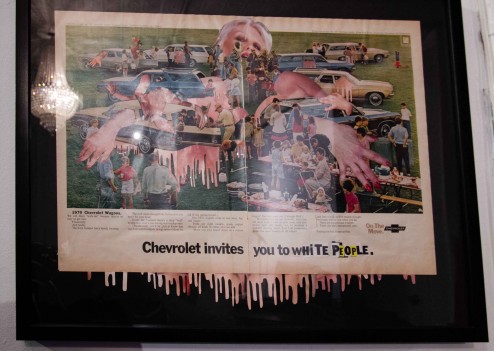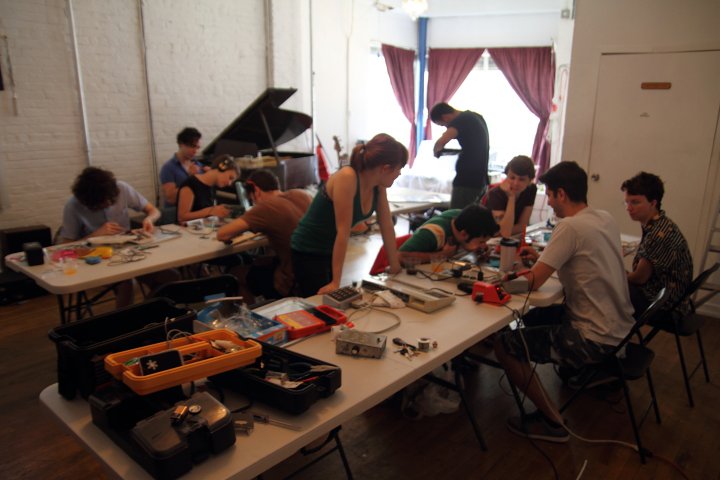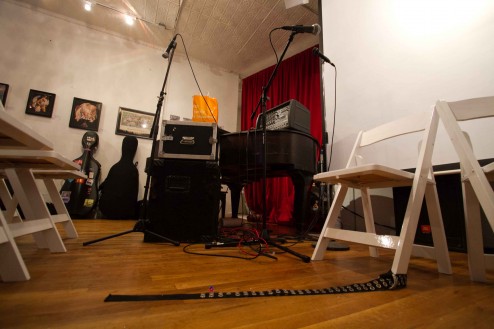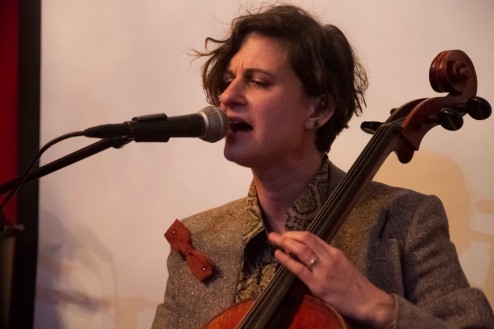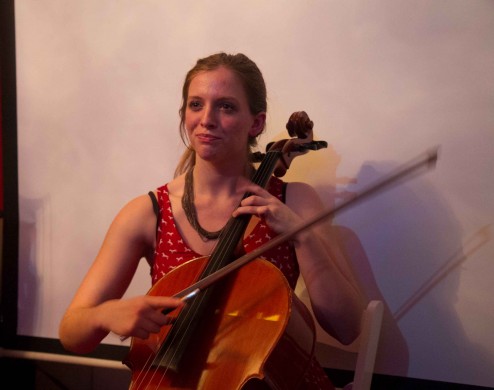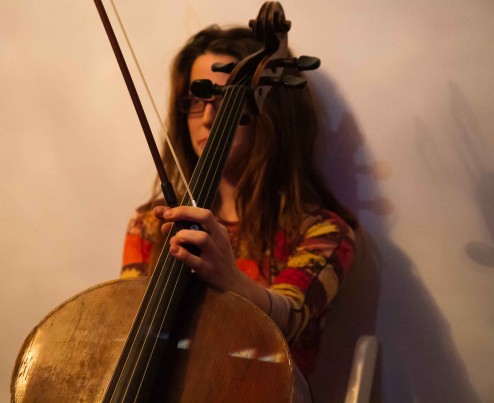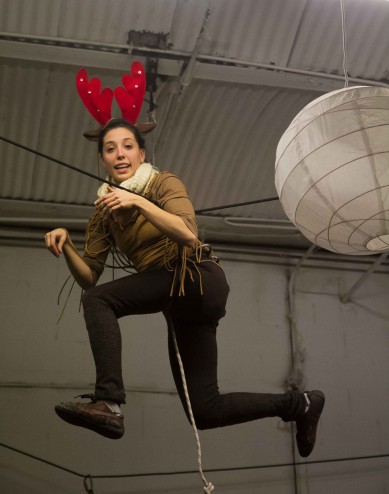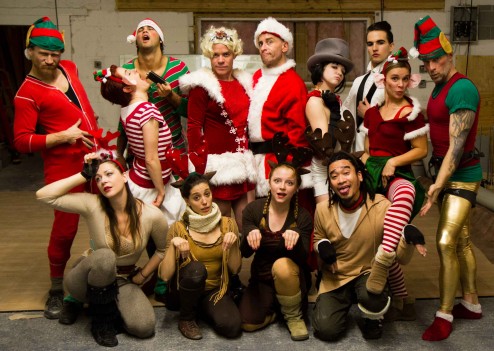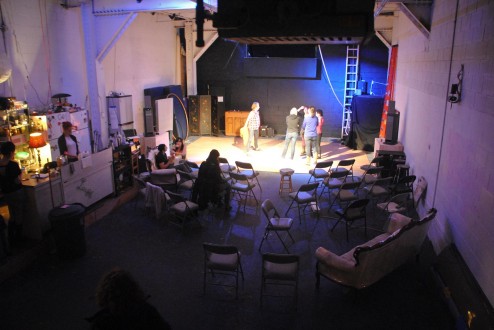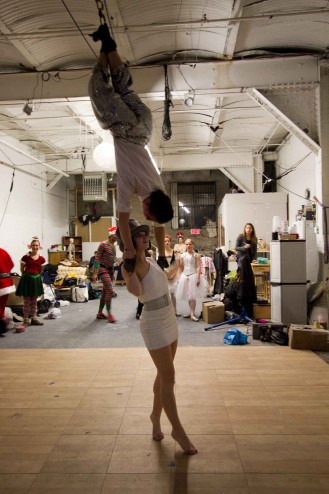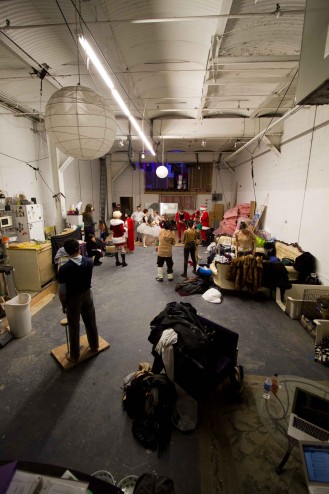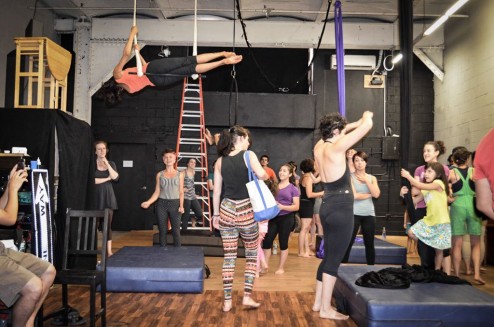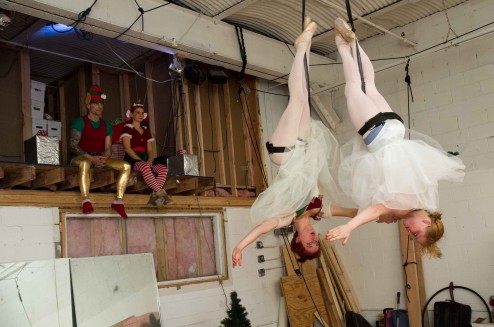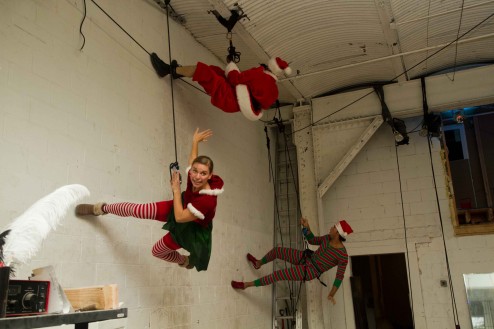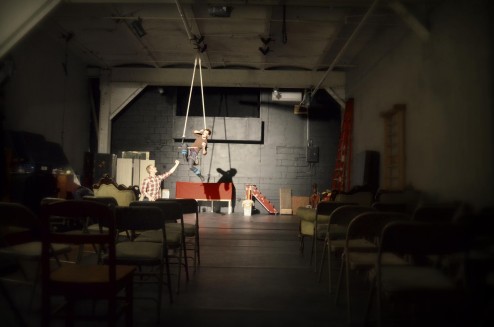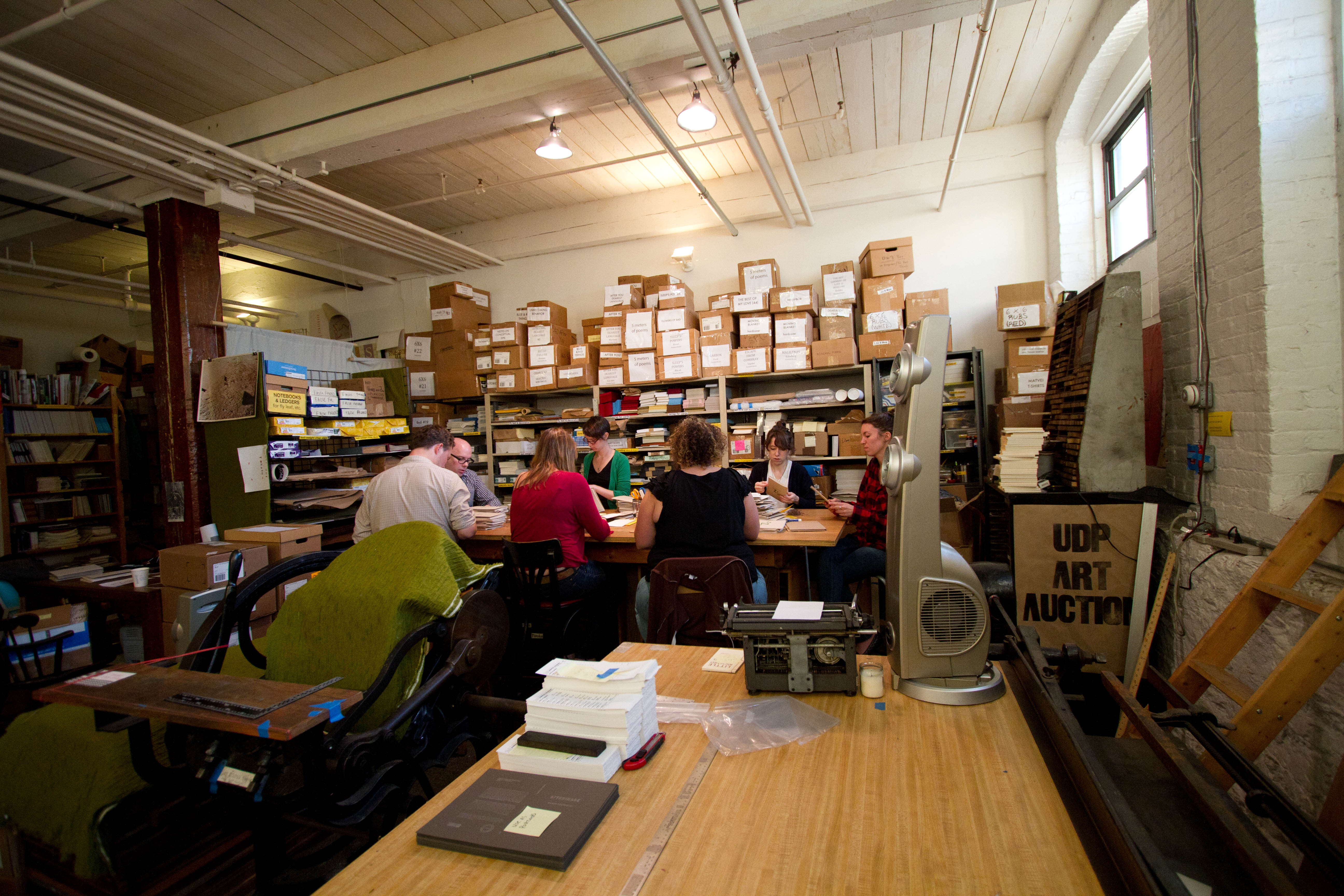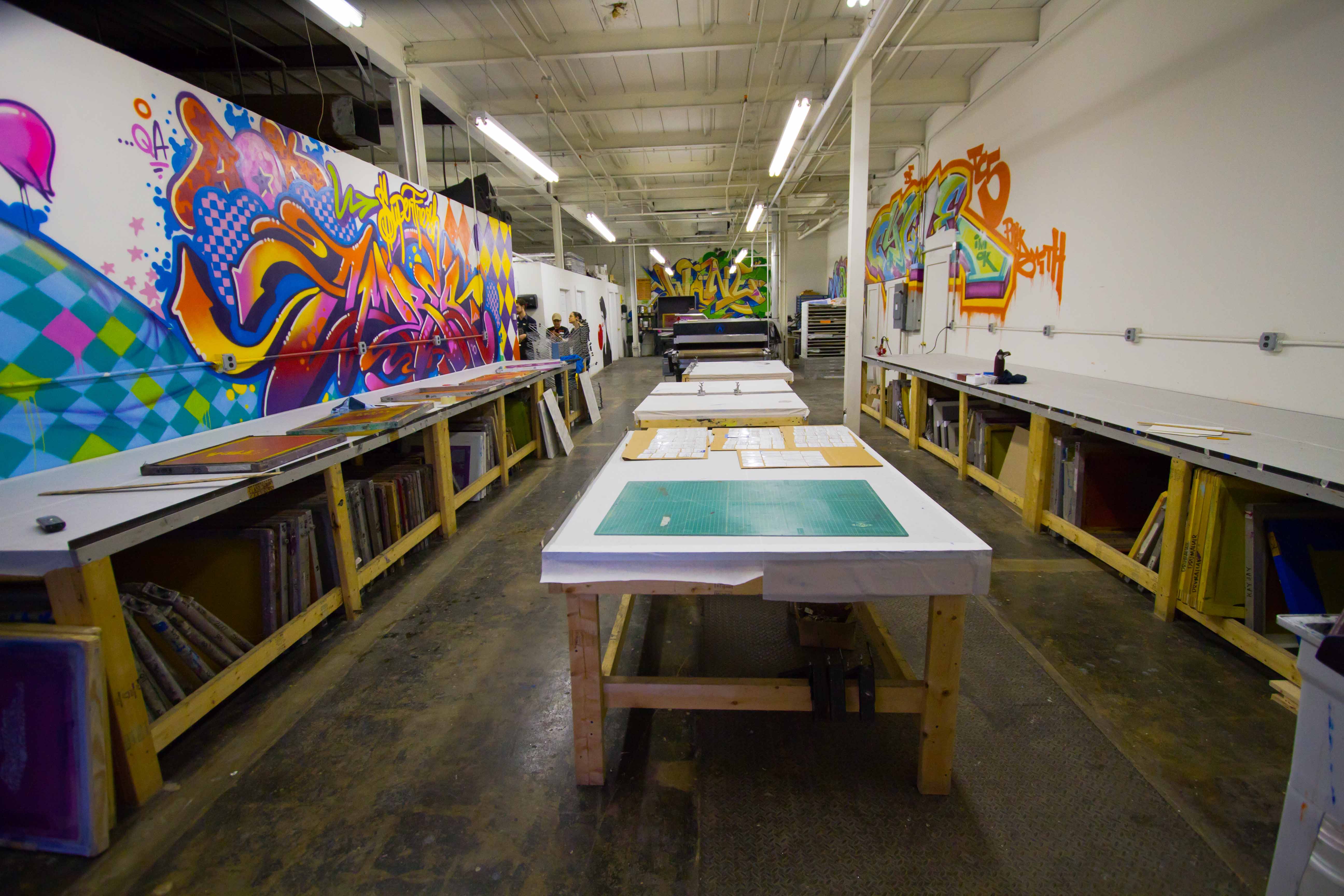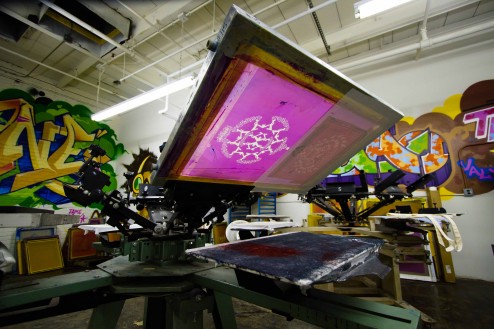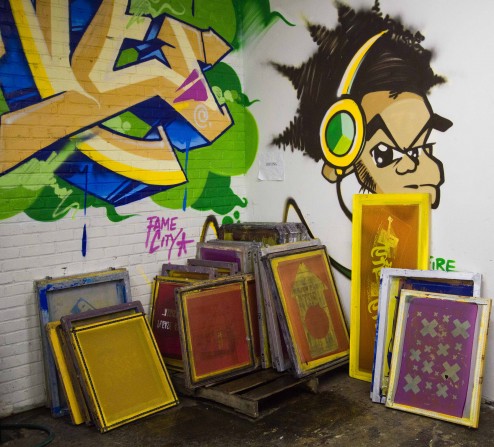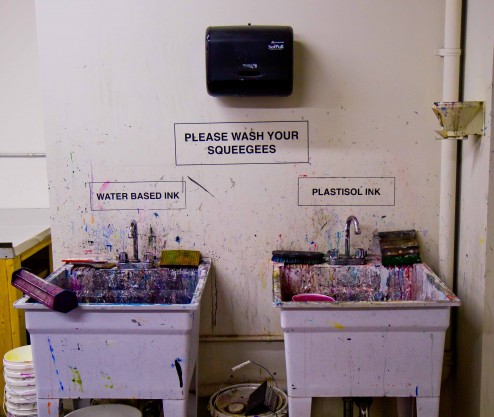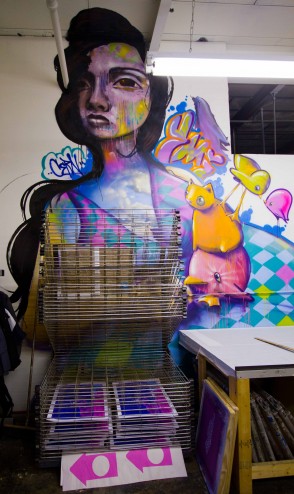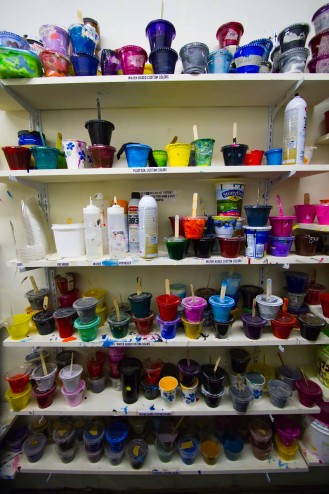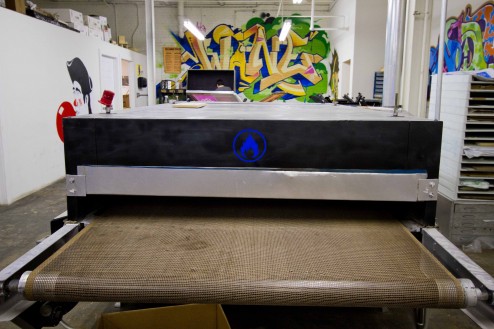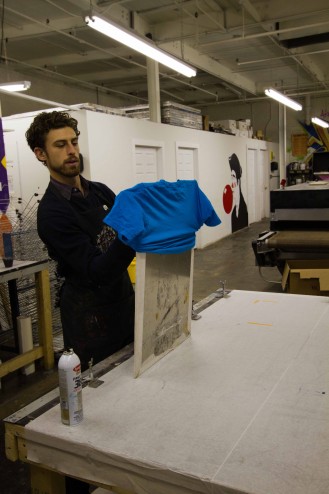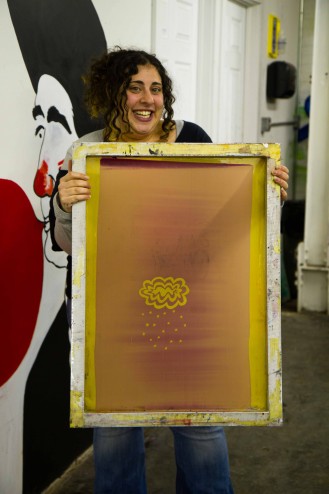space type: apartment & music | neighborhood: williamsburg | active: 2007–2013 | links: myspace, facebook, twitter
For most of its run, Dead Herring—an apartment that sometimes doubled as a DIY music and occasional theatre space was fairly averse to any sort of press. That’s just part of the fun of running an underground apartment venue—some measure of paranoia is often called for. But Dead Herring closed Feb 1st, 2013, right after an amazing commemorative closing show, featuring the Immaculates (a band that was formed at a Dead Herring party), Moonmen on the Moon, Man (who broke up and then reunited just for this show), Necking!! (one of the Dead Herring creators’ band), and special secret guests.
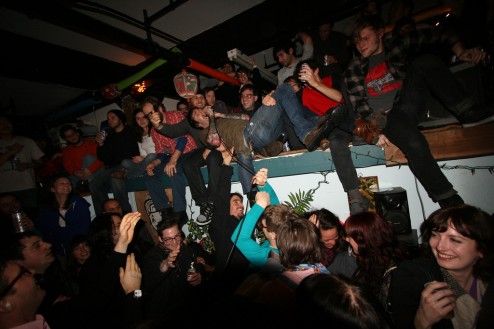
Cuddle Machines, photo by Nicki Ishmael
Read my interview with housemates Liz, Nicki, Jeff, and Andrew, which took place on the eve of the end of Dead Herring, below. For more pix from Nicki, there’s a terrific six-year DH photo retrospective at Impose Magazine. And be sure to check out their new space in North Williamsburg, Cloud City!
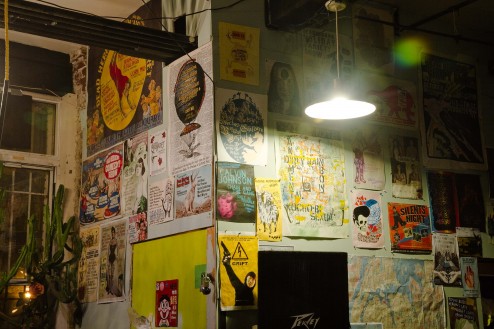
show posters, photo by Maximus Comissar
brooklyn spaces: Tell me a quick history of how this all got started.
Jeff: Liz and I went to college together in California, and we both lived in this co-op called Cloyne Court Hotel in Berkeley that used to have shows in the kitchen, in the basement, wherever. The first time I went there Nerf Herder was playing, and I was like, “Whoa, this place is awesome! I’m moving in here next year!”
Nicki: My band played there once, it was like nothing I’d ever seen before. There were kegs in the quad, there was a room no one could go into, there was the most disgusting bathroom I’d ever seen in my life, it was covered in graffiti, and just everyone going crazy and hanging off pipes. It was so cool.
Jeff: And then years later I wound up living across the hall from Liz and Nick in the McKibben Lofts.
Liz: Nick and I are the ones who started Dead Herring. We had a couple of shows at McKibben, and when we heard about this space, we thought it would be great place to continue to do that. Nicki moved in six months later, and Jeff moved in in 2008, and Andrew moved in two years ago, in 2010.
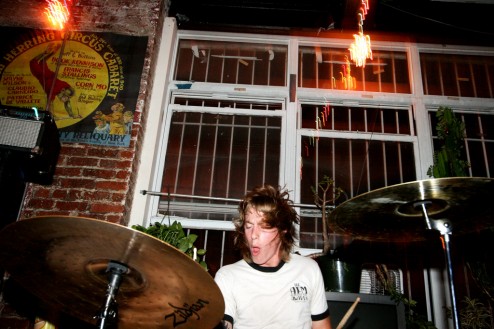
Bare Wires, photo by Nicki Ishmael
brooklyn spaces: What was the first show?
Nicki: It was Maneguar, Pterodactyl, Golden Error, Marvel & Knievel, and Nonhorse.
brooklyn spaces: Do you all book shows?
Liz: I don’t. Nicki books all the music now, Jeff does the variety shows, and Andrew has brought some plays in.
brooklyn spaces: Nicki, is there a succinct way to characterize what kind of music you book here?
Nicki: No, not really. We used to have a lot more experimental noise shows when Nick lived here, because he was into experimental noise music and he booked that. I’m more into punk and rock and indie pop. I don’t know, it just depends on what comes together. If there’s a band coming through that we know, we’ll book around them. Or if we see a band we really like we’ll tell them to come play here. It used to be easier for bands to find us when we used the MySpace page, but that just became too much, we were getting like fifteen emails a day. None of us is a full-time booker, you know? When I have ten minutes I’ll IM people, like, “Hey, you want to play a show?”
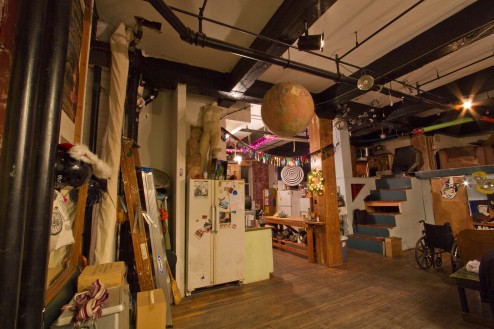
photo by Maximus Comissar
brooklyn spaces: Tell me either the coolest or weirdest thing about living in a place where there are shows.
Nicki: A funny thing is that people don’t realize that we live here. People come here for shows and then they’ll come over for a potluck and be like, “Oh, wow, it looks so different. I didn’t know you had a couch.”
brooklyn spaces: I think that’s part of the charm of these spaces, that you know while you’re watching this band you’re sitting on the roof of someone’s closet or washing your hands in their kitchen sink.
Jeff: Did you read the article about the new Silent Barn in the Village Voice? They were saying how most DIY spaces are illegal, like no one can talk about it, which has kind of been our thing. But now the Silent Barn is like “No, this is completely legal.” They’re going to get a liquor license and whatever. One of our old roommates, Joe, who’s part of Showpaper, he lives there now.
Andrew: I had a lot of conversations with Joe when he lived here about this whole thing, about how all these spaces are somewhere along a continuum, like how much are they a house, and how much are they a venue? Silent Barn has always been basically a venue, even though people live there. We’re really a house that has shows once in a while.
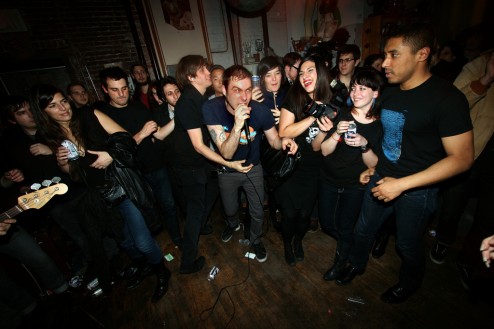
Golden Error, photo by Nicki Ishmael
Nicki: We have to tell people all the time that they can’t have their birthday party here, or their mud-wrestling party. We’ve gotten a lot of weird requests over the years. But overall it’s fantastic, this house pretty much made my life in New York. I met all these people, I found something to do and a community to be in. I had no idea there was a music scene that was this small and this amazing here. You have these moments where you realize this is happening in your life and you created it and you’re a part of it. It makes me so happy. It’s so great when you have a whole bunch of bands come in at the beginning of the night, you’ve never met any of them before, and at the end of the night they’re all giving you giant hugs and saying this was the best show they’ve ever played. It’s so amazing that we had the opportunity to do this.
Jeff: People really appreciate us just trying to make an awesome, fun night, and when everybody’s stoked on it, it’s a good feeling. It’s great when really talented, amazing people have a great time performing here.
Andrew: We just had a theatre show that did a three-night run, and It was like we were living in this little theatre that everyone was a part of. I don’t know if you could achieve that in any other setting.
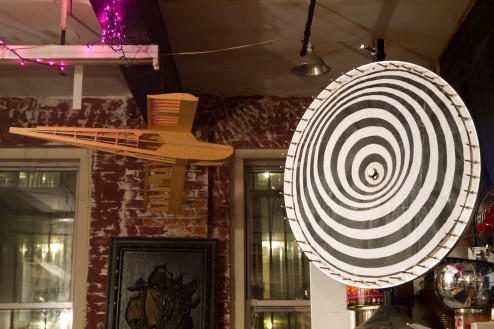
photo by Maximus Comissar
brooklyn spaces: Do you think that being in Williamsburg has affected the space?
Nicki: I really like that Death By Audio is so close, and 285 Kent, and Glasslands. It’s nice that there are still a few really good spaces around here. And I feel like living off the L and the J is convenient, a lot of people can come out to shows here. I don’t always want to go all the way to Bushwick, but people seem happy to come all the way out here, which is awesome. Jeff’s shows get put up on the Nonsense NYC list sometimes, and people come here from wherever because they’re like “Oh, I know where that is, I can get there.”
Andrew: For a performing arts venue it really makes a difference if it’s in a part of town that people want to go to.
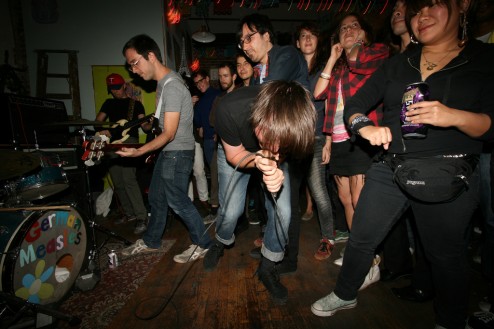
Teenage Nightwar, photo by Nicki Ishmael
brooklyn spaces: And it’s nice to see that there are still places like this in Williamsburg. A lot of people think that all the creativity is gone from this neighborhood, but that’s not true. It’s just a little harder to find. Anyway, tell me about some of your favorite shows.
Nicki: My favorite “I can’t believe I actually pulled this together” show was when Forgetters played here, Blake Schwarzenbach of Jawbreaker’s band. So many people I know have loved his music since we were like sixteen years old, and he played in my living room! And we had this band called Leg Sweeper come, they played with our friends’ band Sleepies, and they were so excited about playing here, and we were so excited about having them play, and after the show we all hung out until 5 in the morning, and everybody slept over, and we made waffles in the morning, and it was magical. Or another one, after The Men played, we had a limbo contest with the guys in the band, which was so ridiculous and fun. I think the craziest show we ever had here was Calvin Johnson and Chain and the Gang. When I introduced Chain and the Gang, everyone just freaked the fuck out.
Liz: That show was my teenage dream come true. I was so thrilled, I couldn’t believe he was in our house. He got here early, and we were trying to set up, and our old cat was sitting on the bar, and he sang a song to the cat! It killed me. My other favorite moment was when Social Studies, our friends’ band from San Francisco, played last year. Right before they started to play my favorite song, someone cut in and said, “We just found out the Giants are going to the World Series.” The whole crowd was full of people from California, and everyone was so so so excited.
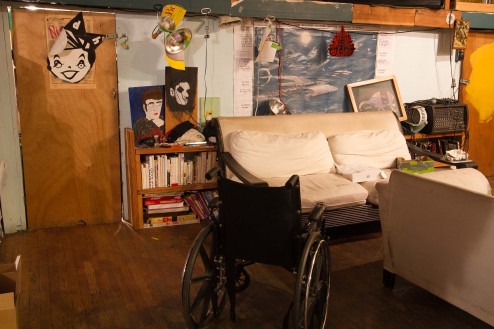
photo by Maximus Comissar
Andrew: I’m from Minneapolis, so when our friends’ theatre group came from Minneapolis to do their play, it was really exciting for me to get to share this space with them. They used to live in a space like this in Minneapolis, and one of them had a space like this in Baltimore before that where my theatre troupe performed, so being able to return the favor was really gratifying.
Jeff: I like all the variety shows, I guess. Oh and Reggie Watts, that was awesome. And Corn Mo.
Nicki: And the ventriloquist! And the magician who sawed a woman in half! And the guy from Cirque de Soliel who took all his clothes off and climbed all over the entire audience! And the lady who juggled with her feet! I know it sounds like we’re making this stuff up, but we’re not.
Jeff: Yeah, we’ve had some crazy stuff.
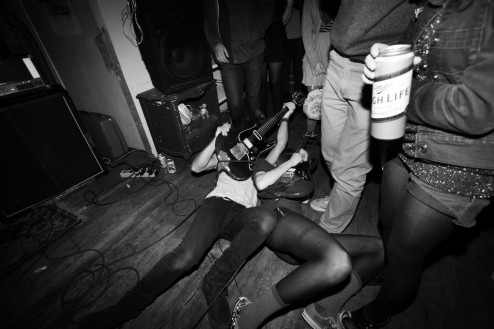
Hunters, photo by Nicki Ishmael
brooklyn spaces: What advice do would you give to other people who want to do something like this?
Nicki: Be nice. That’s something we try really hard to do. Now we’re friends with all the bands and performers and other DIY spaces in the city. That’s why we’re not super nervous about going into the new space. We feel like we’re not going to be alone, because all these other people are going to support us. All the DIY spaces are kind of in it together.
Jeff: Yeah, it sounds cheesy but we really feel like we’re part of a community. And we’re good at welcoming people in and having a positive vibe about everything.
Nicki: That makes it a lot more fun for everyone. We want to have fun too!
***
Like this? Read about more apartment performance spaces: Silent Barn, The Muse, Cave of Archaic Remnants, The Schoolhouse, Greenroom Brooklyn, Newsonic, Jerkhaus
